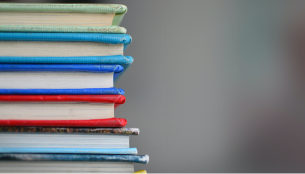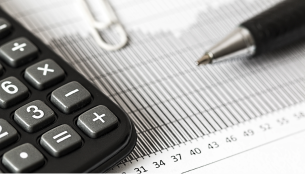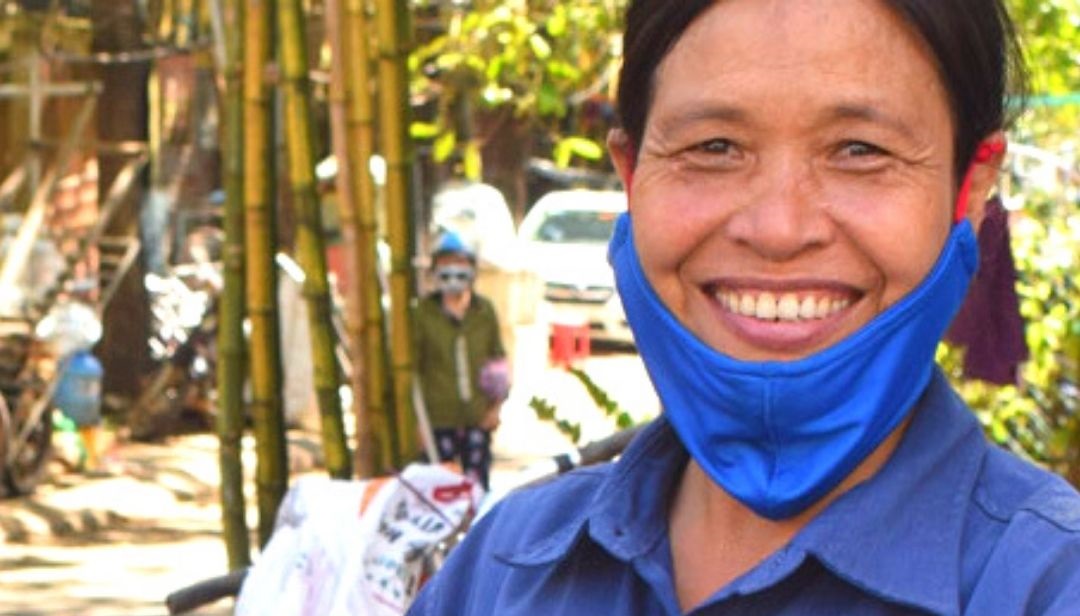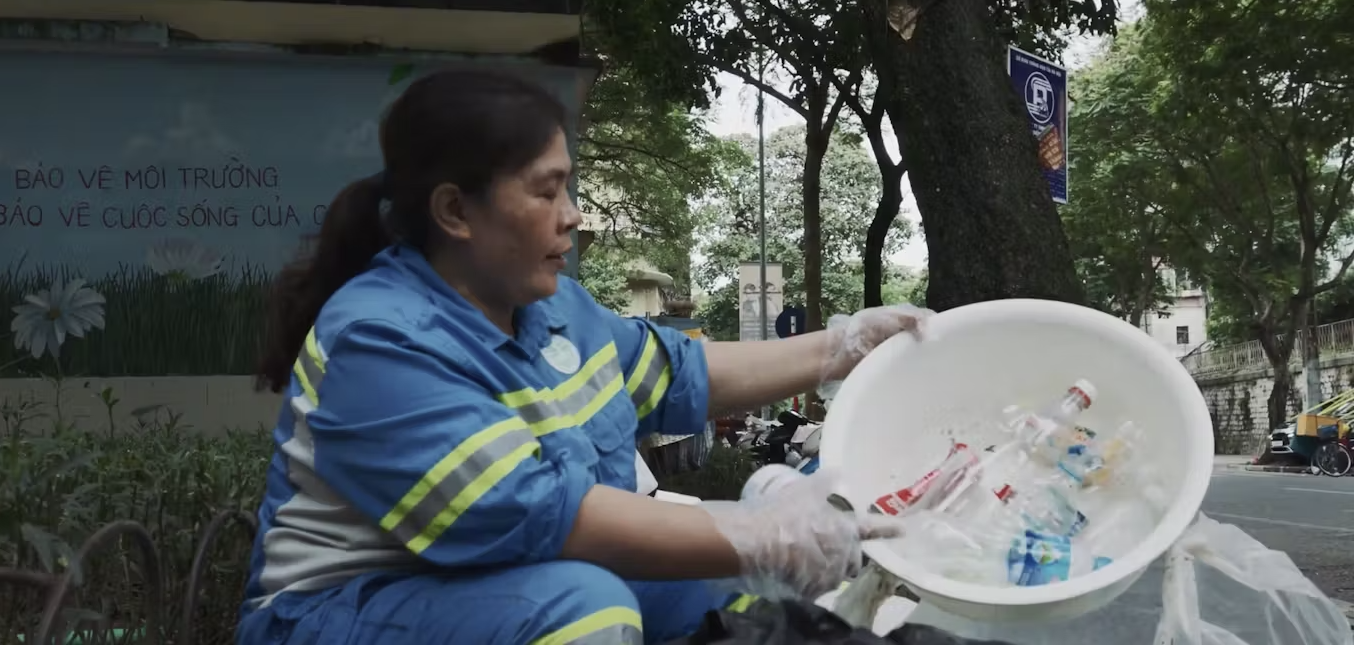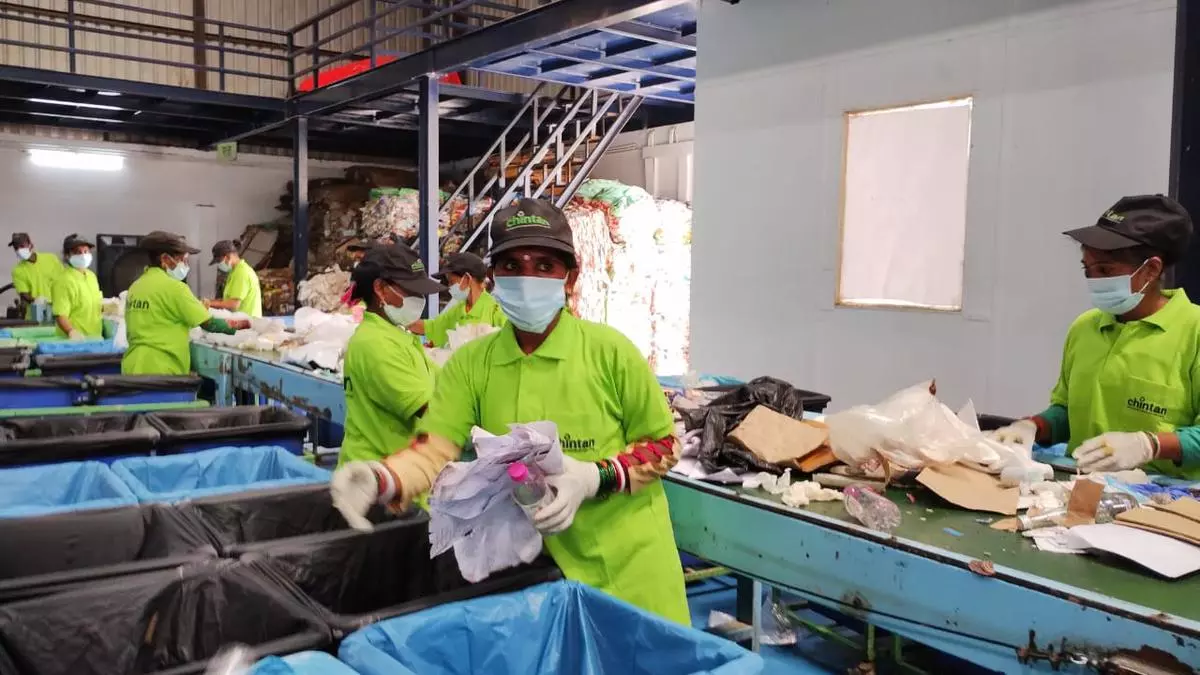
Figure 1. Picture of Harald Tepper, Specialist of Sustainability
Based in Amsterdam, the capital of the Netherlands, Phillips has evolved into an integrated health tech company since its establishment in 1891 through a wide range of businesses. In 1971, a division specializing in corporate environmental responsibility was established, continuing to advance sustainability and circular economy initiatives ahead of the world.
Three Keys to Internal Transformation
- Consistent goals and organizational structure that underlies internal transformation.
Q: At Phillips, revenue from products and services contributing to the circular economy in 2022 accounted for 18% of total sales, and we have succeeded in increasing that percentage year by year. What are Philips’ goals and what role does the sustainability department play?
A: Philips articulates its ambitious goals for a circular economy. The goal consists of four commitments to be realized by 2025, consistent with the overall Phillips perpass and key ESG commitments at this top.
*Circular economy target
- Turn 25% of sales into cyclical products, services and solutions
- Design all new products in line with eco-design requirements
- We will further consolidate recycling practices at our establishments and continue zero waste reclamation (business establishments include non-manufacturing sites such as large offices, warehouses, R&D facilities, etc.)
- Close the loop by trade-in all commercial medical equipment and responsible used product management (enables used systems and components to be recycled, parts recovered, and locally recycled in a manner certified for non-landfill disposal if not possible)
Why do we think it’s important to work on these?
Although Philips’ primary area of business is healthcare, its CO2 emissions account for 4.4 percent of the world’s total, surpassing those from air and maritime transport. Hospitals, in particular, are places that use a lot of energy and materials. And if you look at the carbon footprint of hospitals, 71 percent of that comes from the supply chain. In other words, the majority of CO2 doesn’t come from the energy consumption of hospitals themselves, but from companies like us to manufacture and deliver medical supplies and equipment to hospitals.

Figure 2. Mr. Tepper explaining the circular economy strategy of the Phillips.
Other demands for sustainability initiatives from stakeholders such as investors, dealerships, customers, regulators and members of the public and employees are growing. For example, major hospital chains around the world, especially in the United States and Europe, have their own sustainability goals, and medical supply organizations are also paying attention to the sustainability needs of their customers. Demand for ESG performance from EU regulators is also growing, and regulations have been significantly tightened in terms of product repairability and battery legislation.
Against this background, Phillips has set consistent circular economy goals based on its purposes and key ESG commitments. The company’s organizational structure clearly shows its emphasis on the environment.
Philips’ sustainability division is under direct control and works closely with ESG Chief Legal Officer Marnix van Ginneken, a member of the management committee. In addition, the Sustainability Department places sustainability-related leaders such as sustainability coordinators and ambassadors within its communications, design, research and supply chain to ensure best practices are shared among different divisions. This not only helps our sustainability department set goals in the field, but also allows us to escalate problems in the field to the management committee.
Top-down approach involving management.
Q: Phillips has a “takeback program” to retrieve large medical devices, with one of the pillars of its circular economy goals: “Closing the loop. “Where is the key to the success of this program?
A: At the 2018 World Economic Forum, also known as the Davos Conference, Phillips pledged to further increase circulation by “closing the loop” in large medical device businesses such as MRI by the end of 2020.He then started a take-back program to trade in end-of-life equipment owned by hospitals for refurbishment and recycling.
Phillips already had two large, refurbished facilities and more than a decade of refurbishment experience but wanted to grow by reclaiming more systems from customers. However, when the trade-in service started, the collection rate was low. The trade-in price Phillips offered was so low that the customer traded into another company offering a higher price than we did.

Figure 3. In 2022, Phillips took over 3,400 systems and reused 79% (weight-based) of the material from returned MR and CT systems for refurbishment, reducing the use of virgin materials
Bottom-up approach to personalization of employees
So what Phillips did was look at the overall value of the take-back program from an integrated perspective of management. Initially, the purchase price was determined based solely on the “material value” of how much the business unit responsible for collection could refurbish or recycle the recovered product. But this is a very limited way of measuring value.
So we did various research and found that by offering a take-back program, existing customers tend to appreciate the quality of after-sales service more, have more contracts and become loyal customers who love Philips products longer.
In other words, while the take-back program is expensive and unprofitable for certain business units, it turns out to be a long-term positive if you look at the company as a whole. For a company, the non-material value of increasing customer satisfaction and maintaining contracts is much higher than the material value of a product.
We, the sustainability department and the trade-in department, explained this to the management committee and were able to gain approval from the management.
As a result, top-down instructions raised the trade-in price of the take-back program, rapidly increasing the number of devices traded directly to Phillips. More than 3,400 systems are being traded in by customers in 2022 as part of Phillips’ plan to close loops on all commercial equipment by 2025.
In this way, providing a circular business model requires an “integrated view of value.” It is equally important not only to reclaim products, but also to maintain existing customers’ satisfaction and the ability to deliver more systems and components from the recovered system. The program was successful through integrated collaboration involving management and business units.

Q: Phillips has incorporated its own standard of “eco-design” into the design process since 1994, and by 2022 revenues from products and services that meet this standard account for 70% of total sales. Please tell me about eco-design and product examples.
A: Eco-design is Phillips’ unique design standard for the product development and design process to minimize environmental impact, consisting of four components.
- Improve product energy efficiency
- Reducing the use of specific substances due to regulations, environmental footprints, or other reasons
- Sustainable packaging design
- Circular design
When measuring Philips’ environmental impact, we know that the energy consumption when using products has the greatest impact, and improving energy efficiency is especially important. The circular design was added in 2021, and includes modular design, sustainable material design, and disassembly and recycling considerations. As an example of products designed for eco-design, consumer laser depilators increase charging efficiency, design free of PVCs and other harmful substances, use FSC-certified packaging and provide rental services to facilitate reuse and extended lifecycles.

Examples of large medical devices include the latest MR scanners. The equipment needed to cool the magnets inside with liquid helium, so conventional MR scanners required about 1,500 liters of helium and needed occasional replenishment because they were constructed to be completely unsealed. However, the latest MR scanners powered by Philips’ Blue Seal technology have dramatically reduced helium consumption to seven liters. Helium is completely sealed, so there is no need to replenish it. The weight of the magnets has also been reduced by 900 kg, helping to reduce carbon dioxide emissions associated with transportation, resource mining and production.
Eco-design has two objectives. The first is to reduce the environmental impact of Phillips products, and the second is to strengthen corporate innovation and competitiveness. By staying at the forefront of design, product designers and engineers are inspired to suggest the best ideas, which differentiates Phillips from its customers.
By prioritizing sustainability through eco-design, Phillips has established itself in the marketplace and gained the trust of consumers and partners. Since the 1970s, Phillips has implemented environmental programs focused on energy consumption and materials. Eco-design was first officially introduced in 1994 and has become a symbol of corporate responsibility and growth as it is constantly update.
You can find the original article in Japanese here




